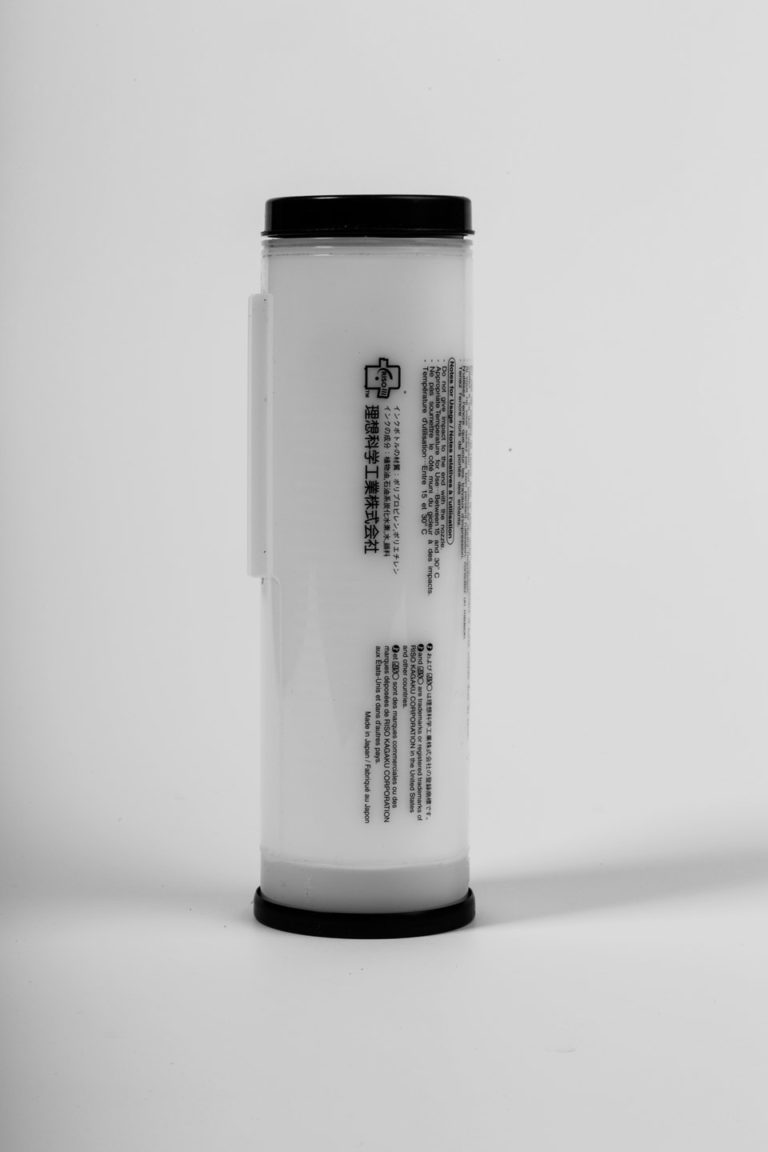A
Die Farbe ist ein Produkt der Wasser-in-Öl-Emulsion und wird auf Basis von Sojaöl, Lösungsmittel auf Mineralölbasis, Glycerin, Ruß, Titandioxid, organischem Pigment, dem Mineral Dinatriumtetraborat, Alkydharz und Wasser zusammengesetzt. Hierbei ist das Dinatriumtetraborat der wohl einzige Stoff der als toxisch eingestuft werden muss, im Gegensatz zu Lösungsmitteln innerhalb von Offsetfarbe oder feinem Tonerstaub der beim Digitaldruck entweichen kann. Die Sofafarbe ist als höchstens genau so, wenn nicht weniger schädlich, einzustufen.
The ink is a product of the water and oil emulsion and is composed of a soybean oil base, a solvent based on mineral oil, glycerol, carbon black, titanium dioxide, organic pigment, mineral disodium tetraborate, alkyd resin and water . Disodium tetraborate is arguably the only substance that is classified as toxic, unlike solvents in offset ink or fine toner dust that can escape during digital printing . Soy colour could be classified as equally, if not less, harmful at most. The printing inks of the risograph are an advancement of the colours once used in mimeographs. They are supplied in cylindrical cartridges, with the cartridges available for the MZ series having a height of about 27 cm, a diameter of 8.5 cm and a weight of about 1300 grams. They have a capacity of 1000 ml. Some cartridges of other series (e.g. CZ or CR) have a larger diameter and lower height due to machine-related reasons and have a capacity of 800 ml. According to the manufacturer, the optimal mixing ratio is carefully determined to ensure long-term storage (guaranteed for up to twelve months) while still guaranteeing maximum colour quality as well as rapid drying. The big advantage of the riso ink is that it does not dry out inside the printer, as long as the ink in a cartridge is inside a coated printing cylinder, since the high oil content of the emulsion ink largely prevents the liquid from being penetrated or drying out . If the ink cartridge is removed from the device, it can be closed and preserved by using a lid with a screw cap.
After a printed sheet emerges from the machine and is ejected into the RISO’s collecting tray, the water components are separated from the ink and evaporate, leaving behind only oil and ink in the structure of the substrate.
 1
Essential for printing: a white ink cartridge and a roll of master foil
1
Essential for printing: a white ink cartridge and a roll of master foil
 2
Emulsion process of RISO colour: While the colour pigment sinks into the substrate, the water content evaporates after the printing process
2
Emulsion process of RISO colour: While the colour pigment sinks into the substrate, the water content evaporates after the printing process

